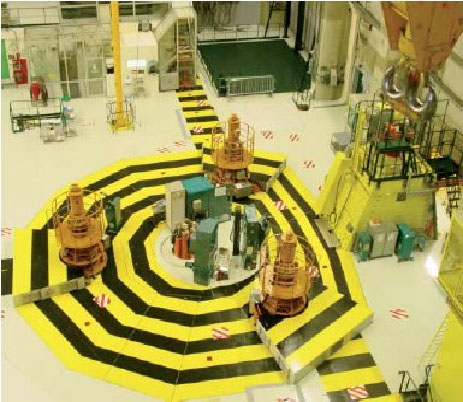Technological irradiation reactors
Using the neutrons generated, and confined, in the core of the reactor, the irradiation installations provide applications in many different fields such as:
R&D (Research and Development)
- Research on current and future nuclear plant materials’ structure, and their behaviour over time
- Studies on fuel behaviour for fuels in current nuclear installations and those being designed for the future
- Studies on the transmutation of long-life fission products and/or minor actinides to improve management of nuclear waste
- Medicine (production of isotopes used for certain medical examinations and therapies)
- The electronics industry (doping of silicon plates)
- The Defence : simulation of irradiation effects on components etc.
Currently, in France the activities of teaching are carried out on reactor ISIS (technological irradiation reactor) at the CEA of Saclay and the reactors MINERVE and AZUR at the CEA in Cadarache.
Irradiation reactors and nuclear medicine
Cancer is constantly on the increase fortunately more than half of these cancers are cured, and for these cancers, most of them used an irradiation procedure in the treatment.
Radioisotopes are used in nuclear medicine more for examinations than for therapies. There are approximately 20,000 gamma cameras in use in the world for examining the heart, brain, liver, joints, etc. Most of these examinations use Technetium 99 obtained from irradiations in a reactor.
Moreover, 100% of the radioisotopes used for therapeutic activities are produced in irradiation reactors. For the radioisotopes used in medical imagery, 75% are produced in reactors and 25% in cyclotrons.
In Europe, there are three primary reactors which ensure industrial production: HFR (The Netherlands), BR2 (Belgium) and OSIRIS (France).

